Original URL: https://www.theregister.com/2013/08/29/review_huawei_ascend_mate/
Huawei Ascend Mate: The phondleslab for the skint
Good screen, decent performance, nice price
Posted in Personal Tech, 29th August 2013 08:03 GMT
Review Whether you think VLPs (Very Large Phones™) are the ultimate evolution of the personal telecommunication device or the bastard offspring of smartphone and tablet, there’s no doubting the little – well, not so little really – buggers are racing out of the woodwork. Most are rather expensive but Huawei’s Ascend Mate, like the Samsung Galaxy Mega 6.3, is targeted at the more impecunious buyer.
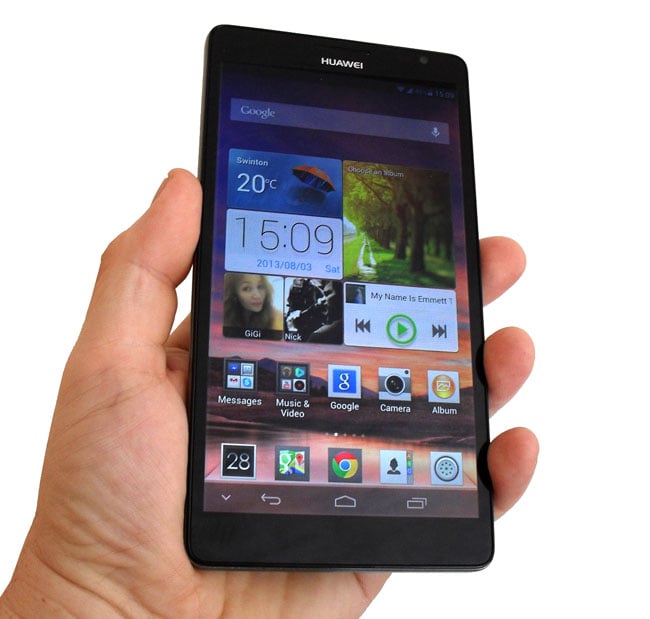
Huawei’s Ascend Mate: compact. Not
The Mate is a 85mm wide, 163mm tall and 10mm thick slab. That makes it a very similar height and width to the Mega 6.3 but a full 2mm thicker. At 198g, the Mate is only 1g lighter than the Samsung but since the Mega has the bigger screen by 0.2 of an inch, it clearly takes the prize for the more cleverly packaged of the two.
There’s little to say about the exterior design, which is wholly utilitarian. It is good to see the power and volume controls both placed low enough down the right-hand side to be easily accessible with your thumb, assuming you’ll be holding the Mate in your right hand, of course. It’s also not as tiredly familiar as the Galaxy design.
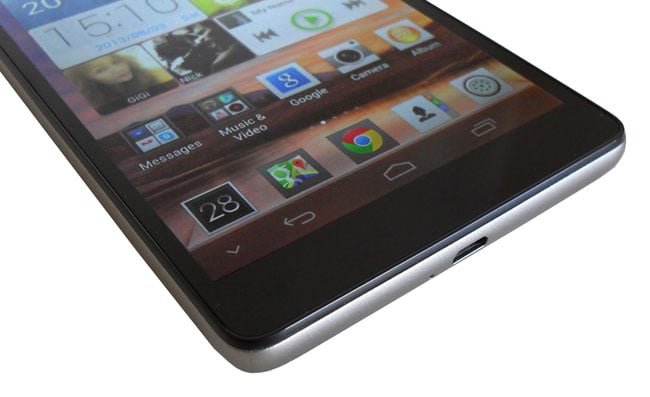
There’s a micro USB port on the bottom. Note the downward arrow icon to hide menu bar
Despite being made largely of plastic, Huawei’s new VLP feels both solid and well screwed together. The screen is made from Gorilla Glass. To my eyes it looks and feels rather smarter than the Mega 6.3 and the closer-to-square edges makes it easier to hold the thing securely. The extra bezel width has its advantages too: I often found myself accidentally touching the Mega 6.3’s screen when reading and gaming but that happened less often with the Mate.
Check the back and sides of the Mate and you'll find that the 4050mAh battery is fixed in place and that there’s a Micro SD card slot to back up the 8GB of internal storage – just shy of 5GB is all that’s free after system requirements. The plastic flaps that cover the Sim and memory card slots look and feel a little on the cheap side but if you are like me they won’t see much action once you’ve set your device up.
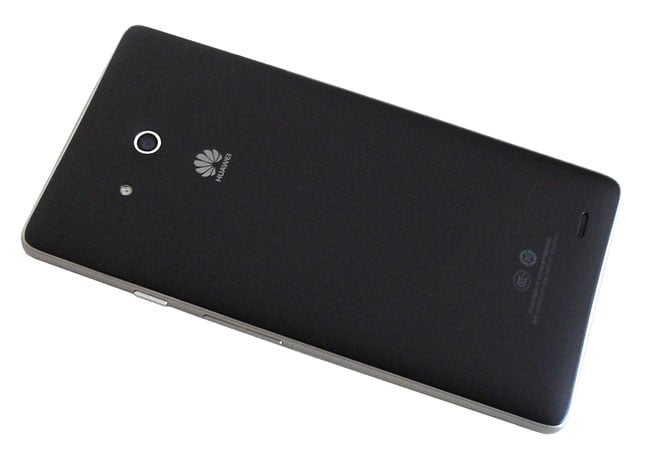
The battery is capacious but fixed
The chipset inside the Mate is the HiSilicon (read Huawei) K3V2 piece, which features a quad-core 1.5GHz processor and 2GB of RAM. Graphics are handled by a Vivante GC4000 GPU. Though puffed as a 16-core GPU, it only has two actual compute cores so don’t get too excited. Running the Epic Citadel app in benchmark mode returned a score of 32.5 frames per second, well short of the mid-50s the likes of the Mega 6.3 can manage.
Running the AnTuTu mobile benchmark, I got an average score of just below 16,500. This is broadly similar to what you’d get from a Samsung Galaxy Note 2 and its 1.6GHz Exynos 4412 quad-core chip. As it is Cortex-A9 based, the CPU isn’t as advanced as the latest Qualcomm Krait or Cortex-A15 designs, but real-world performance is reasonable enough. The chipset does generate a fair amount of heat compared to the competition, though.
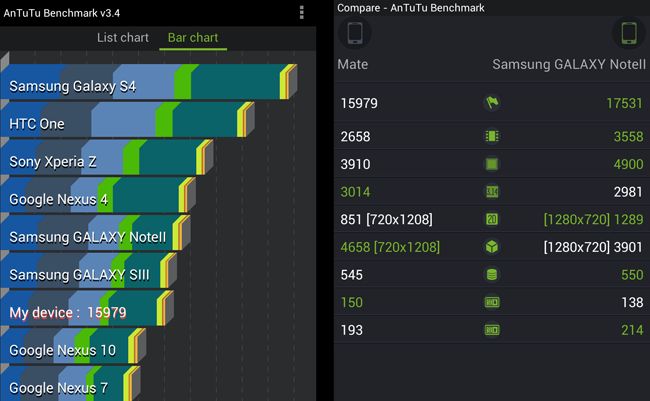
Benchmarks
All my regular 3D test games including Modern Combat 4 and EA’s Real Racing 3 ran smoothly – which is all you can ask of a device with a mid-to-budget price sticker. I have read that early 'Mates struggled with some graphically intense games but I can only assume the reviewers who experienced those problems were testing pre-production models with less than fully optimised software.
Where Huawei has done something rather strange is with its new Emotion launcher, which runs over Android 4.1.2. There’s no app tray so all your application icons sit on the homescreens. It’s very iOS-like and I’m not at all sure I like it. To stop your screens from looking an app-strewn mess, you need to get busy and creative with the folders.
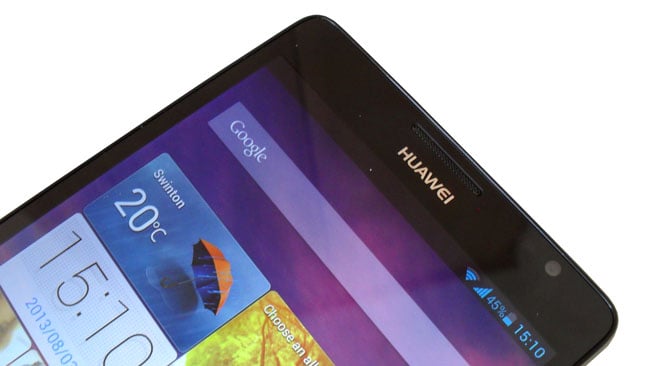
Up top
Thankfully, a random selection of third-party launchers worked perfectly well and reintroduced the traditional app tray so it’s no biggie if you don’t like Emotion either. If you can live with Huawei’s UI, then the Mate comes preloaded with 20 different themes which offer plenty of scope for fannying around with the look and feel of the interface.
One-handed compliments
Where Huawei has been rather more clever is with the Mate’s keyboard. You can opt for a two-thirds keyboard that can be positioned to the left or the right which means you can reach all the keys with the thumb of the hand you are holding your Mate with. The phone dialler performs the same trick. It may not be pretty, but it is effective. It’s just a shame that the control to change the keyboard layout from full to two-thirds width is in the settings menu rather than being on the keyboard itself.
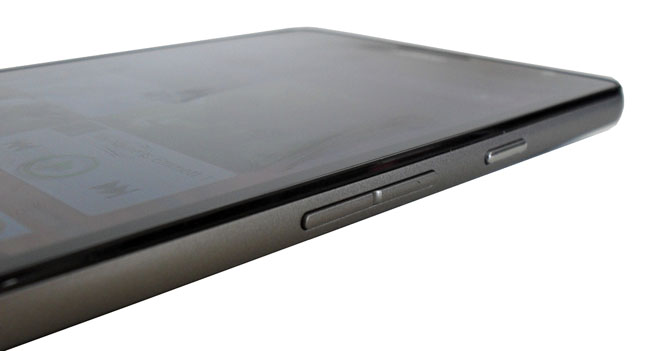
The buttons on the are well placed
I wouldn’t for a moment suggest that these two modifications make the Mate as easy to use single-handedly as a Samsung Galaxy S4 or Sony Xperia Z, but it’s good to see a manufacturer thinking of ways to make a VLP less of an, ahem, handful.
Another handy software feature is the option to retract the on-screen Android navigation buttons so you can free up the entire screen and avoid accidental Back/Home/Google Now activations while gaming. Make an up-swipe gesture from the bottom of the screen and the buttons reappear.
There is one small bug on the software front, though. Like many Android phones coming out of China, the gallery doesn’t connect to Picasa, forcing you to use Google+. But if you update the Google+ app on the Mate it refuses to launch – so you have to uninstall the latest updates and set your app manager so that it doesn't automatically update your apps. That’s not really good enough.
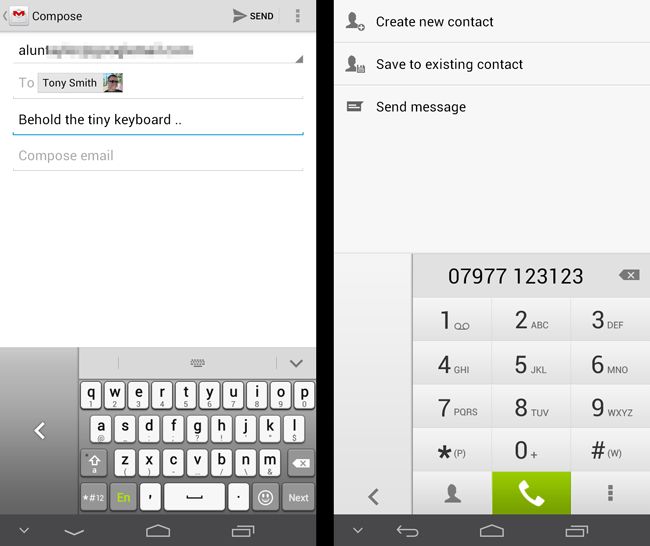
The small phone dialler and the one-handed keyboard tweaks are handy
Some people may complain that the screen is only 1280 X 720 rather than the full 1080 banana, but at the price it seems a reasonable compromise. The pixel density of 241dpi is still better than the original Nexus 7, which is a reasonable visual benchmark in these matters.
Being IPS+ LCD rather than Plain Jane TFT, the screen performs well. Contrast, viewing angles, colour saturation and brightness are all what I’d describe as above average. You can even adjust the colour temperature. The Mate’s display, then, is better than the Mega 6.3’s, which is far from bad itself, and it supports gloves-on fondling.
The Mate’s photographic credentials are less impressive. The 8MP main camera is very ordinary and on a par with the camera fitted to my Motorola Razr i, a handset not renowned for its photographic prowess. The HDR mode and the ability to record video at 1080p are the imaging high points, though the 1MP webcam is pretty decent and can record video at 720p. It’s a little annoying that the main camera lacks tap-to-focus or simultaneous still and video shooting, though.
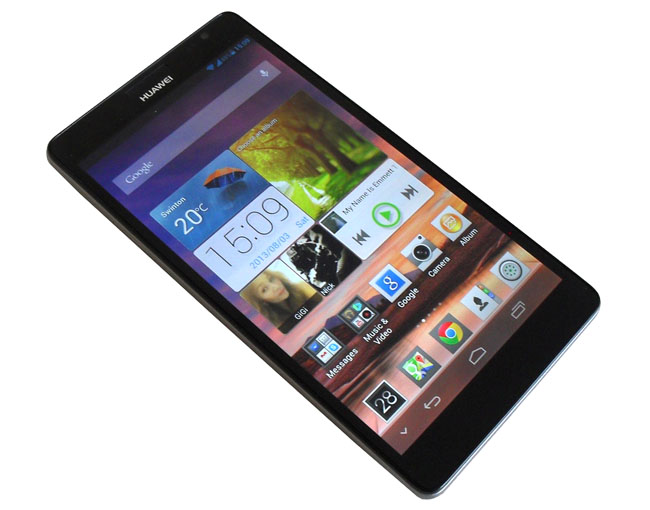
Come up to the lab and see what’s on the slab
Wireless connectivity is also pretty middle-of-the-road so you get 42/5.7Mbps 3G, dual-band 802.11n Wi-Fi and Bluetooth 4.0 but no LTE and no NFC. The micro USB port supports On-The-Go hosting but not MHL video output. Signal reception was solid, as was call quality, helped by a noise-cancelling second microphone. Speaker performance was excellent in terms of both volume and quality helped by built-in Dolby sound processing.
The Mate’s ace in the hole is battery life. Looping a 720p video drained the battery in just over 12 hours 30, 90 minutes better than the Mega 6.3 managed thanks to an extra 950mAh of capacity. Dial down the screen brightness and you can easily get two days and then some from a full charge.
The Reg Verdict
For the money, the Ascend Mate is not at all a bad device. The screen is good, the price is right – Vodafone is offering it for £25 a month with nothing down, and you can pick unlocked examples up for under £340 – battery life excellent and there are some interesting VLP software optimisations like the two-thirds keyboard.
And while made predominantly of plastic, it still manages to look and feel rather more upmarket than the Samsung Galaxy Mega 6.3. Performance isn’t bad either, though I don’t see Huawei’s K3V2 chipset keeping the folk at Nvidia or Qualcomm awake at night. Shame about that Google+ bug though. ®